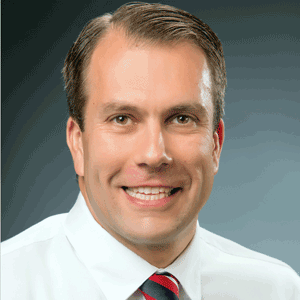While Southwest Washington often prides itself upon being different from Portland, there’s one area where it’s time for us to follow our southern neighbor’s lead: Building seismic safety.
What’s happening in Portland?
Since the mid-1990s the city of Portland has adopted and enforced seismic upgrade requirements for its 1,600-plus unreinforced masonry (URM) buildings. These supplemental building code requirements were enacted in response to increased awareness of the region’s seismicity coupled with an understanding that URM buildings, although often historic and rich in architectural significance, fare poorly in earthquakes. Under current city of Portland requirements, seismic upgrades of URM buildings are triggered in conjunction with planned building modifications, such as a change in use or occupancy, structural alteration or replacement of roofing. While these efforts have yielded improvement in the seismic safety of the city’s building inventory, many of the city’s URM buildings remain seismically vulnerable. Consequently, Portland is on the verge of adopting an updated policy.
What’s new in Portland?
Portland’s new policy would require seismic upgrades of URM buildings within a certain time period, such as 10 to 20 years, regardless of what projects may, or may not, be planned for a building. While the plan and its implementation are not yet finalized, the change is expected to yield significant improvements in the city’s seismic safety. The new plan will be reviewed by the Portland City Council this month and a final vote will occur at a later date.
What about Southwest Washington?
Unlike Portland, despite nearly identical seismicity, the city of Vancouver, Clark County and other Southwest Washington jurisdictions have no comparable seismic upgrade triggers for URM buildings. Under current provisions, a seismically vulnerable building in Southwest Washington that would receive seismic upgrades, were it in Portland, would have no similar obligation for improving seismic safety. Southwest Washington and Portland currently stand on opposite sides of the same river, both literally and figuratively, with respect to building seismic safety.
Improved seismic safety is needed in Southwest Washington
The same large earthquake that strikes Portland will also affect Vancouver and the surrounding area. But while Portland’s seismically upgraded URM buildings are expected to offer improved life safety, our URM buildings, most of which have received no seismic improvements, likely cannot. With no seismic upgrade policy in place, our earthquake losses may be greater and our post-earthquake recovery longer. As Southwest Washington grows and matures, it’s time for us to proactively work to protect our historic building inventory and improve life safety during extreme seismic events.
Where to start?
Vancouver, with the greatest number of URM buildings, could adopt a seismic upgrade policy that is enforceable as a condition of procuring a building permit for URM buildings undergoing triggering projects. It’s important, however, to recognize that what works in Portland is not likely to work here without modifications. Our seismic upgrade policy must account for our community’s unique circumstances, economy, building inventory and political environment. Once Vancouver’s policy is enacted, other Southwest Washington jurisdictions, including Clark County, could follow Vancouver’s lead.
There are real issues, such as project financing, to be resolved before arriving at a successful policy. But as Portland and other west coast cities have demonstrated, these challenges can, and must, be resolved. It’s time for Southwest Washington to join the party.
Not everyone is waiting
The development and implementation of an appropriate seismic upgrade policy will not happen overnight. In fact, the process could take several years. Meanwhile, the probability of a large earthquake grows, prompting some building owners to take matters into their own hands and not wait for local jurisdictions to act. Renovation projects that can be exploited to include voluntary seismic upgrade work, even if only partial upgrades, are being looked upon as valuable building investment opportunities by some local building owners.
One such building owner, a large religious organization with a strong presence in Southwest Washington, uses re-roof projects as a chance to implement a “roof only” seismic up. These partial seismic upgrades implement needed seismic upgrade work that must be done while the roof is temporarily removed. The remaining seismic upgrade work is deferred until another renovation project, such as an interior remodel, creates similar opportunities.
Another example of local seismic safety proactivity is occurring at the Providence Academy office building. This historic, multi-story URM building in downtown Vancouver is currently undergoing an extensive renovation, including replacement of the aged roof and exterior balconies. Recognizing that the project created an opportune time to undertake seismic upgrades, The Historic Trust, the building owner, elected to voluntarily enact the same seismic upgrades that would have been placed upon the project had the building been located in Portland.
Mike True, president and CEO of The Historic Trust, explained the decision to include seismic safety in the project: “We felt that it was the right thing to do as the steward of a very important historic asset. For a small project cost increase we’ve improved seismic safety for building users and occupants. The building’s market appeal has been enhanced and we feel that we’ve acted responsibly as a member of community.” Regarding the absence of local seismic upgrade requirements, True stated: “Had our building been in Portland our project would have included seismic upgrade work anyways. It made sense to apply the same standard to the Academy building even though we are in Vancouver.”
Time to act
While a few local buildings are being upgraded, the large majority are not. It’s time for Vancouver, Clark County and other Southwest Washington jurisdictions to join Portland by making building seismic safety a higher priority. Challenges to these goals exist, but we can raise the bar for our community by enacting an appropriate and reasonable seismic upgrade policy for Southwest Washington.
Brandon Erickson, PE, SE is principal of Erickson Structural Consulting Engineers PC, located in Vancouver. The firm’s practice focuses upon structural assessment, rehabilitation and renovation of existing building structures. Erickson can be reached at brandon@ericksonstructural.com or (360) 571-5577.






